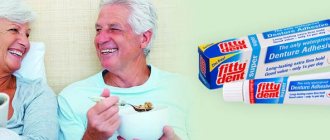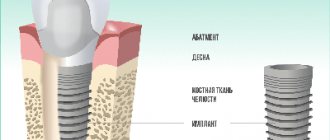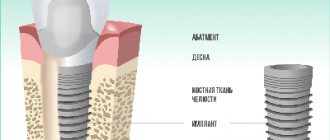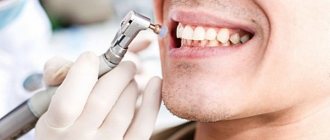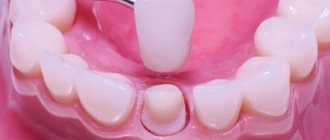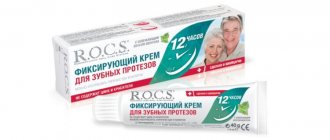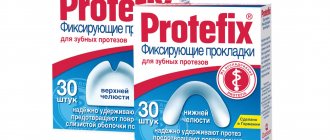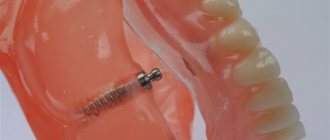The device is intended for cleaning the surface of jewelry, lenses, instruments for dentistry, surgery and precision industry. The operating principle is based on creating a cavitation effect under the influence of a frequency of 20~40 kHz. The shock wave creates a zone of variable pressure, which in turn causes the formation of microscopic bubbles. The latter, collapsing, transmit the impact to the contaminated surface being treated. During this process, the product is completely immersed in an ultrasonic bath. Selection criteria: supply voltage, ultrasonic frequency, capacity and internal dimensions of the bath.
AOYUE 9030 – impressive and inexpensive
Ultrasonic bath for cleaning small products from adhering mineral oil, rosin, stuck-on grinding and polishing pastes and other substances.
The power of the design will allow you to carefully and delicately remove heavy and viscous materials from the surface of soft or fragile parts.
Simple clean water is used - it is allowed to take ordinary tap liquid. The product tank is corrosion-resistant and sealed. Power supply – standard single-phase power supply 220 volts.
Pros:
- Compact size, ease of use, tightness.
- Effectively cleans precious items, especially silver and stones, from fatty deposits.
- A very inexpensive product.
Minuses:
- Due to the detergent (probably), dark spots appear on some parts, without loss of performance.
- Working in plain water with iron for more than 15 minutes is a guarantee of rust.
Recommendations: 11 Best Steel Bathtubs
13 best acrylic bathtubs
16 best baths
JEKEN CE-5200A – CD cleaning
A device for removing sweat, fat and mechanical dirt deposits from the surface of CD, VCD or DVD discs. Capable of working with jewelry of various metals of the most bizarre shapes.
The bath is made of high quality stainless steel with an internal useful volume of three-quarters of a liter. Power reaches 50 watts.
There are five modes with freely adjustable processing time at a frequency of 42,000 Hz. The product is certified according to several international standards.
Pros:
- Compact device, cleans the disk surface well.
- It is equipped with a stand for disks, and there is a device for installing a clock.
- Affordable price, choice of mode and processing time.
Minuses:
- Not very suitable for cleaning manicure tools, including blood residues.
How to properly clean dentures
Removable dentures require regular cleaning. All rules for their hygiene can be divided into two categories - daily and periodic.
Daily
Daily care includes brushing your teeth in the morning and evening with a soft toothbrush. When cleaning, special attention is paid to the inside of the structure, which is in constant contact with the gums. After eating, the structure should be removed and rinsed under water. Additionally, you can use an irrigator, which thoroughly cleans surfaces and allows you to remove bacterial plaque in hard-to-reach places. When cleaning, care should be taken not to damage the locks, hooks and other elements of the orthopedic structure.
Periodically
Proper care of dentures does not just mean cleaning them from deposits with a brush and irrigator, but also using bactericidal solutions aimed at destroying pathogens. They are used up to three times a week according to the manufacturer's instructions. Additionally, it is recommended to use agents that inhibit bacterial activity. This is especially true several years after the installation of structures, since by this time more deposits have accumulated on them. These products include sprays and lozenges, which not only help fight pathogenic microflora, but also freshen breath and prevent inflammatory processes.
BAKU BK-9050 – adjustable power
Stainless steel container equipped with an ultrasonic emitter. Used for non-aggressive cleaning of ancient coins, jewelry, artifacts. Cleans electronic boards by removing drops of rosin.
The device is equipped with a mechanism for setting two types of power, depending on the tasks being solved.
The front panel is equipped with an intuitive push-button control system. Pure water is used or with the addition of household detergents, mixtures of various organic alcohols in order to enhance the cleaning effect.
Pros:
- Adjustable power - for delicate items or heavily soiled items.
- Convenient shape, sealed lid, easy to use controls.
- Visualization of selected parameters via the display screen.
Minuses:
- Quite noisy, like a mini vacuum cleaner.
- It is necessary to monitor the types of metals so that they do not form a galvanic couple.
READ ALSO
14 best cast iron bathtubs
Ultrasonic baths
The device cleans the prosthesis efficiently: after treating the product in the bath, there will be no plaque or stone left on it.
Outwardly, it looks like a container made of stainless steel (other metals that are not susceptible to rust can also be used), on the bottom or walls of which ultrasound emitters are placed.
The principle of operation of the device is as follows: sound waves pass through plain water or other cleaning liquid, during which contamination is completely removed from the products placed in the bath.
The advantages of cleaning in an ultrasonic bath are undeniable:
- allows you to clean hard-to-reach places;
- extends the service life of the prosthesis;
- the quality of cleaning is higher than with the manual cleaning method;
- the likelihood of damage during the procedure is minimal.
The cost of such an ultrasonic bath depends on many characteristics: volume and dimensions (for the same volume, the dimensions of the device may vary); frequency and maximum power (the higher these indicators, the more effective the cleaning will be); the presence of a heating system (the function allows you to improve the quality of cleaning); the presence of a timer and a system that controls the temperature of the environment.
Skymen JP-008 – touch control
Design for cleaning various products through dynamic vibrations in a liquid environment at ultrasonic frequencies. Designed for operations with jewelry of various metals and configurations.
Works with manicure cutters, files, and is used to remove drops of rosin and other flux from radio and electronic circuit boards. It is possible to clean dentures and wristwatches.
It is equipped with a special plastic grid to isolate the loaded item from the main body of the bathtub.
Pros:
- Convenient, unobtrusive control via touch buttons is quite unexpected.
- It removes plaque from dentures in one or two minutes, no toothbrush is needed.
- Very nicely made, reminiscent of a medical autoclave.
Minuses:
- There is no provision for fixing the lid; it rattles terribly during operation.
- The description does not correspond to the declared data: the frequency is 40 hertz, instead of 42 and only 15 minutes, instead of 30.
READ ALSO
12 Best Hot Tubs
How to properly care for dentures -
Hygienic care for dentures will differ depending on whether or not you use a special cream to improve the fixation of removable dentures. The use of such a cream not only improves the “adhesion” of the prosthesis to the mucous membrane, but also significantly reduces the penetration of food particles under the prosthesis. Therefore, patients who use such a cream can remove the denture not after every meal, but only once a day.
But this is only provided that the cream actually prevents food particles from getting under your denture. The fact is that if your prosthesis is many years old or it was made poorly, the shape of the prosthesis may no longer correspond to the shape of the tissues of the prosthetic bed, and then food can get under the prosthesis even with the application of cream. In this case (and also if you do not use cream at all to improve fixation), it will be necessary to remove and wash the denture after each meal.
1) Rules for daily hygiene care -
Care for removable dentures made of plastic, nylon and other materials should be carried out according to the following scheme, which includes the following rules...
- Immediately after eating, remove the denture and rinse it under running water, removing all visible food debris.
It is important to hold the prosthesis very tightly under running water and try not to drop it, because If you fall, the prosthesis may break. It is best to rinse the denture not over the bathtub, but over the sink, because... in this case, the fall of the prosthesis is unlikely to be critical (24stoma.ru). Additionally, if you still have natural teeth, use a soft toothbrush and toothpaste after each meal to clean them, as well as the roof of your mouth and tongue. If there are no teeth, then in addition to a soft toothbrush, you can use a gauze swab dipped in a special mouthwash (simply rinsing your mouth with liquid is not enough).
- Thorough cleaning of the denture - it is not enough to just rinse the denture under running water. Many patients are accustomed to rubbing their dentures with toothbrushes and toothpastes, and sometimes even tooth powder. This leads to the fact that the abrasive components of the powder and paste scratch the prosthesis, making it rough. As a result, the prosthesis darkens, and on the contrary, even more dirt begins to stick to the rough surface.
Remember that dentures made from slightly elastic materials (such as nylon dentures and Acry-Free dentures) should not be cleaned with abrasives at all. Only with special products, or completely non-abrasive toothpastes or gels, the RDA of which is zero (RDA is the abrasiveness coefficient, written by quality manufacturers).But dentures made of ordinary acrylic plastic can be cleaned with a soft toothbrush and low-abrasive toothpaste. For example, children's pastes are characterized by low abrasiveness. It is better to choose ones where the RDA will be from 0 to 25 (regular toothpaste has an RDA from 70 to 80). Liquid soap or dishwashing detergent will also work. However, it is necessary not only to clean the prosthesis, but also to periodically carry out its complete total disinfection.
Important: caring for removable dentures should under no circumstances be carried out using toothbrushes with hard bristles. You should ONLY use a SOFT toothbrush (marked “soft”)! When cleaning, also make sure that you do not bend the plastic or metal clasps of the prosthesis (hooks).
2) Periodic complete disinfection of the prosthesis, cleaning from pigment plaque and tartar -
There are 2 disinfection options here. The simplest and cheapest means for cleaning dentures are products in the form of effervescent tablets that dissolve in water. Tablets for cleaning dentures contain chemical components that dissolve pigment plaque and tartar on the surface of the denture, and also kill 99.9% of all bacteria. The most famous product in pharmacies is Corega tablets, which are sold in 3 versions (“Whitening”, “Bio Formula” and “Double Strength”).
Corega tablets for cleaning dentures –
Directions for use: Place one tablet along with the prosthesis in a glass of lukewarm water. After 5 minutes spent in the solution, the prosthesis will acquire a fresh and neat appearance, and will also undergo complete disinfection. To improve cleaning, at the end of this time you can take the denture from the solution into your hand (this is safe) and rub it with an old toothbrush dipped in this solution. Then rinse the prosthesis and hands with running water. The cost of 1 package of such products will be from 250 to 300 rubles (for 30 tablets).
But experience shows that effervescent tablets for cleaning dentures are more suitable for soft stains, because... they are ideally designed for daily use. If you have neglected the cleaning of your prosthesis, i.e. a layer of tightly attached pigment plaque or tartar has already formed on it - such tablets are unlikely to be able to completely clean the denture of dental deposits. Of the three variants of Corega tablets, the “Corega Double Strength” tablets are the stronger remedy, but even they cannot cope with massive plaque and dental plaque.
CE-5700A – digital timer
Lightweight and easy to operate ultrasonic bath. There are five different types of processing to choose from. The device is equipped with a digital timer for accurately setting the cleaning time of loaded products.
Equipped with a protective grille (basket), stands for discs, watches and jewelry.
Area of use: removing grease and deposits, salt deposits from the surface of dentures, jewelry, manicure and other instruments, cleaning electronic storage media.
Pros:
- Quiet, durable plastic case, touch panel with display.
- Clear time display using a digital timer.
- Sealed lid, stylish design.
Minuses:
- Consumers did not find any negative features.
Why do problems occur if you don't clean your removable dentures correctly?
When you eat, food plaque is deposited on your denture, just like on your teeth. The worse a person cleans his dentures, the faster the denture loses its original appearance. Food plaque becomes a breeding ground for the development of microorganisms. The processes of decay and the development of a viral infection cause bad breath and the onset of inflammatory processes on the gums.
In order to avoid the unpleasant consequences of the formation of food plaque and tartar, the removable denture must be cleaned after every meal.
Pro'sKit SS-803F – environmentally friendly cleaning
An environmental cleaning device for removing residues of mineral oil and polishing substances. Effectively removes oil and fat deposits, rosin residues and other flux from the surface of the printed circuit board.
The action of the device is based on the effect of high frequency waves on the surface being cleaned. The bath is used in a scientific laboratory, dental clinic or medical facility.
Recommended for use in jewelry workshops, purchases and pawn shops. The design provides microprocessor control of the thermostat. Processing time can reach one and a half hours.
Pros:
- High frequency ultrasound, environmentally friendly cleaning process.
- Processing of dentures, brushes, combs, glasses.
- Five processing modes.
Minuses:
- Only positive reviews.
READ ALSO
12 best bathroom furniture series
Denture care products
There are two categories of care products for removable dentures:
- Fixing. They are used only in conjunction with removable structures and are designed to ensure the strength of their retention in the oral cavity. In addition, reliable fixation helps restore diction, protect soft tissues from injury under constant mechanical influence of the artificial structure, and improve chewing function. There are several types of fixing agents:
- powder - it is sprayed in a thin layer onto the surface of the prosthesis, after which the structure is put on and pressed to the gums for a certain time. As a rule, such a remedy is widely used for low salivation; it allows you to securely fasten the prosthesis;
- cream - it is applied in a thin layer to the edge of the prosthesis - dotted or in strips. It is worth noting that a large volume of applied product will lead to its removal to the outside - it is important to observe the measure. This cream is designed not only to fix the prosthesis in the oral cavity, but also to create a shock-absorbing pad to protect the gum tissue from mechanical stress.
- strips are special products that are used when the patient cannot get used to the presence of a foreign body in the oral cavity. The strips are placed under the prosthesis, which allows you to soften the pressure and fix the structure.
- Cleansing. Cleaning products for the care of removable dentures are presented as follows:
- a brush with soft bristles - it is important to change it monthly, and if inflammatory diseases of the oral cavity occur, the replacement is made prematurely;
- brush - allows you to clean the spaces between teeth;
- paste - with low abrasiveness or without abrasive particles at all;
- rinse aid - a liquid with a disinfectant effect: tablets that dissolve in water or pharmaceutical products with an antibacterial effect;
- an irrigator is a device that allows you to wash out food particles and dental plaque even from hard-to-reach places; you can choose a compact irrigator for home use;
- floss - dental floss for cleaning interdental spaces and the peri-gingival area.
As a rule, the cream lasts for at least 12-24 hours, after which the product is dissolved by saliva. This requires rinsing the prosthesis and removing any residue.
Following recommendations for the care of removable dentures will ensure wearing comfort, prevent possible complications and extend the life of the structure. The installation of a prosthesis by an orthopedic dentist is necessarily accompanied by an explanation of the rules for caring for the structure and, if necessary, prescribing the products that will be required for care.
Codyson CD-7810A – optimal for small jewelry
An easy-to-use yet effective ultrasonic device for mixing chemical liquids or degassing solutions. Used in medicine - cleaning and polishing optical products, sterilization of instruments, preparation of dental devices.
The device is very convenient for working with jewelry made of various metals and precious and semi-precious stones. It is equipped with a basket and stands for various processed items.
Pros:
- A convenient device for working with used jewelry.
- Possibility of cleaning discs and manicure devices.
- Simple and intuitive control panel.
Minuses:
- A little noisy, but only if you stand close.
AOYUE 9060 – increased volume
Ultrasonic bath with a volume increased to one liter. Microprocessor control is used. The control system is formed on a single panel, equipped with a display for visualizing the working time of the processing process.
The device is equipped with a durable transparent cover for monitoring the processing operation in real time. The power of the ultrasonic emitter is designed to remove heavy, viscous substances, mineral oils, various wax structures, including rosin-based fluxes.
Pros:
- Increased bath size, respectively, increased internal volume.
- Working with “sticky” layers.
- Intuitive control panel, nice design.
Minuses:
- Perhaps the price. The device is not for home use.

